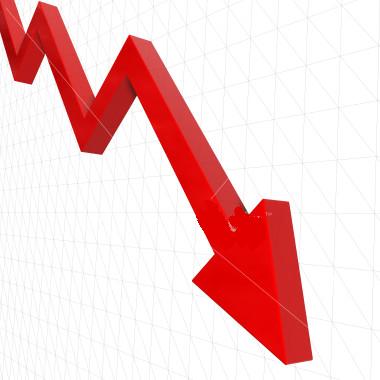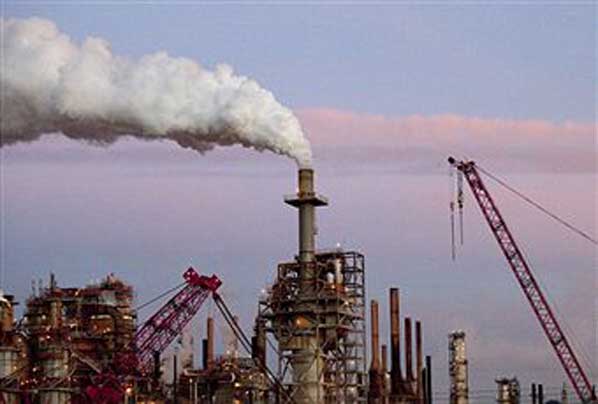The ministry of statistics and programme implementation released the GDP growth forecast for the current financial year a few days back. It expects the Indian economy to grow by 7.4% during the course of the year.
This is significantly higher than the GDP growth of 5.5% forecast by the RBI. The ministry has moved on to a new method of calculating the GDP, which has led to this massive jump. In fact, in late January, the GDP growth for the last financial year (2013-2014) was revised to 6.9% using this new method. The GDP growth as per the old method had been at 5%.
Explaining this jump in growth, a Crisil Research note points out: “The Central Statistical Office’s explanation for the upward revision in GDP for previous fiscal is premised on improved efficiency. For instance, the manufacturing sector is generating more value-added from the same level of input. This has led to faster growth in manufacturing GDP which is a measure of the value added.”
The jury though is still out on the possible explanation for this jump in economic growth. The high frequency data doesn’t explain this jump. Car sales remain muted. Tax collections have seen slow growth. Corporate profitability isn’t anything to write about. The number of stalled projects continues to remain huge. Exports are on a decline.
Also, it is worth remembering that the numbers highlighted above are real numbers, unlike the GDP which is a theoretical construct.
Nevertheless, the 7.4% GDP growth number has got the media going. Several news reports have compared India to China and said that India is now growing faster than or as fast as China. Here is a PTI news report which says: “Indian economy will grow by 7.4 per cent this fiscal, outpacing China to become the world’s fastest growing economy, after a revision in the method of calculations.”
Another news report in the Wall Street Journal says: “India expects its economy to grow at 7.4% in the current fiscal year, a growth rate that rivals China’s, reflecting a strengthening recovery but also a recent radical revision in the way the country calculates its gross domestic product.”
It also needs to be pointed out here that for the period October to December 2014, the Indian economy grew by 7.5% as per the new method of calculating GDP. During the same period the Chinese economy grew by 7.3%, in comparison to the same period in 2013.
While technically there is nothing wrong with saying India is growing faster or as fast as China, we also need to keep in mind what base are we talking about. India’s GDP last year was $1.87 trillion. On this base it is expected to grow by 7.4%. China’s GDP last year was almost five times larger at $9.24 trillion. So China has a significant larger GDP than that of India. Even if the Chinese GDP grows by 1.5% it would be adding as much to economic output as India would at 7.4%.
Given this, comparing Indian growth with Chinese growth just doesn’t make any sense. Further, if we look at the GDP growth data provided by World Bank since 1980, it throws up interesting results. Only four times between 1980 and 2013, has the Indian GDP growth been faster than that of China.
Two of those years were 1989 and 1990 when China was probably facing the after effects of the failed Tienanmen Square revolution. In 1981, China grew by 5.2% and India by 6%. The only other year when the Indian growth was faster than that of China was 1999, when the Indian economy grew by 8.8% and the Chinese economy grew by 7.8%. This was when the dotcom bubble was at its peak.
In fact, in 17 years during the period under consideration the Chinese economy has seen double digit growth rates. On the other hand the Indian economy has grown by greater than 10% only once since 1980. This was in 2010 when it grew by 10.3%. The Chinese managed to beat us even then by growing by 10.4%.
Over the years, the Chinese economy has been growing faster than that of India on a much higher base. This has increased the gap between the GDP of the two countries.
In short, saying that the Indian economy is growing faster than China is like saying that Bihar is growing faster than India or to be more specific faster than Gujarat. The gross state domestic product for Gujarat in 2012-13(the latest data that is available and at 2004-05 constant prices) was at Rs 4,27,219 crore. It had grown at a rate of 7.96% in comparison to 2011-12.
Now compare this to Bihar, where the gross state domestic product had grown by 10.73% in 2012-13, which was higher than the GDP growth rate of Gujarat. In fact, between 2006-07 and 2012-13, the economic growth rate of Bihar was higher than that of Gujarat, on five out of the total seven occasions.
But the question is on what base? In 2012-2013, the gross state domestic product of Bihar stood at Rs 1,58,971 crore. As mentioned earlier the gross state domestic product of Gujarat was at Rs 4,27,219 crore or nearly 2.7 times. It is important to further point out that Gujarat has a population of 6.27 crore people and the population of Bihar is 9.9 crore. Hence, Bihar has been sharing a significantly lower GDP with a larger number of people.
So, the point here is that Bihar (like India) is growing on a lower base. Hence, saying that it is growing faster than Gujarat, which is 2.7 times bigger in economic terms and has a smaller population, doesn’t make much sense.
The same logic holds when we compare the Indian GDP growth to that of China. Like Bihar’s economy has a long way to catch up to that of Gujarat, the same stands true of India’s economy when compared to that of China.
The column originally appeared on www.firstpost.com on Feb 12, 2015
(Vivek Kaul is the author of the Easy Money trilogy. He tweets @kaul_vivek)




